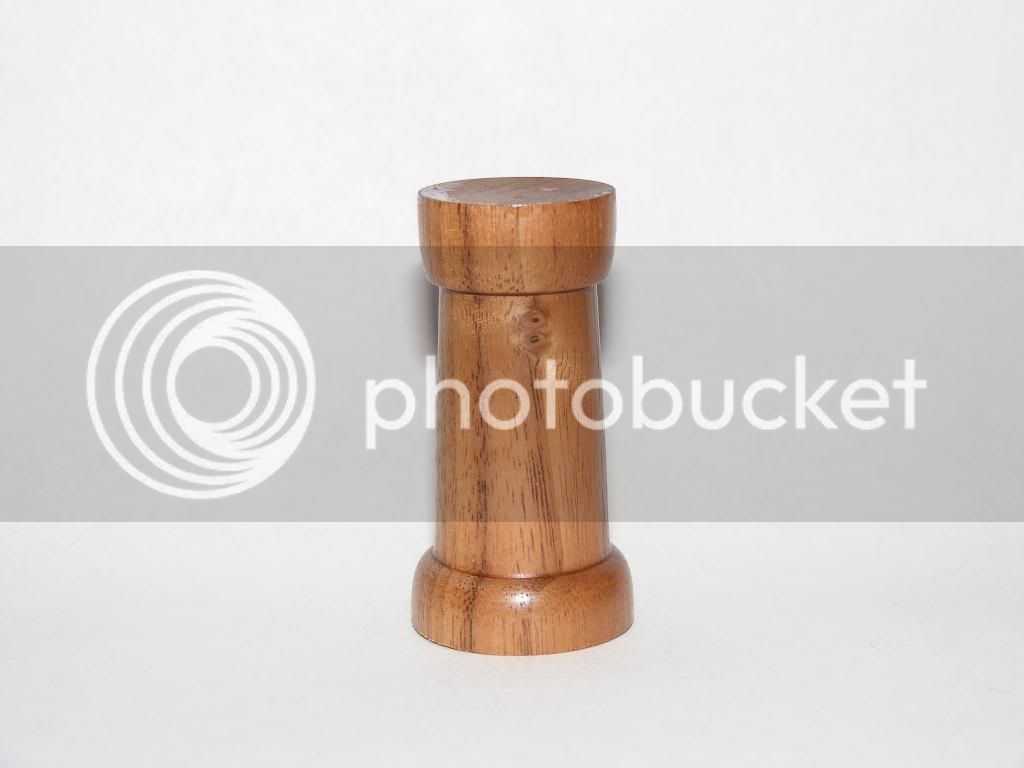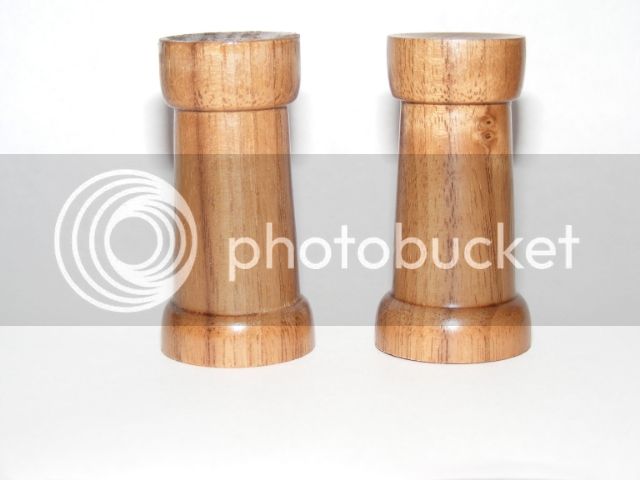nev
Established Member
Again a little early, but whats life without whimsy? :mrgreen:
A pair of matching chess pieces.
Any size.
Any Wood. - They Do not need to be black and/or white.
To be made on the lathe using wood turning tools.
Carving / sawing etc acceptable to form the 'Head' (Kings crown, queens coronet, bishops mitre, rook castellations etc)
This months judge will be Richard Findley **
'Post your entries here.' this thread will remain open for 2 days during which time you can upload the required pics of your entry, along with a brief note about how you made it, what tools and finish you used, what wood (if known) and the objects dimensions. (this helps the judge and plagiarists ).
Please post 3 or 4 images of your work / entry as follows...
1 showing front profile
1 showing side profile (if different)
1 showing the pair side by side
1 optional photo showing any other feature you think might be of interest
Image size please use image size 640 x 480 0.3 mp, same previous months
Please upload your pics and description between ..
now on the 24th Feb.
and
10pm on the 26th Feb.
After this time the thread will be locked for Judging
Results will be given on or before the last day of the month
Any entry's that are outside the rules and requirements will not be judged
The Judges decision is final ( Any negative comments re judging must be via PM only and not on the open forum )
NO Critique or comments on any work until February Please, After the Judging and results.
Best of luck .
Roundup
A pair of matching chess pieces.
Any size.
Any Wood. - They Do not need to be black and/or white.
To be made on the lathe using wood turning tools.
Carving / sawing etc acceptable to form the 'Head' (Kings crown, queens coronet, bishops mitre, rook castellations etc)
This months judge will be Richard Findley **
'Post your entries here.' this thread will remain open for 2 days during which time you can upload the required pics of your entry, along with a brief note about how you made it, what tools and finish you used, what wood (if known) and the objects dimensions. (this helps the judge and plagiarists ).
Please post 3 or 4 images of your work / entry as follows...
1 showing front profile
1 showing side profile (if different)
1 showing the pair side by side
1 optional photo showing any other feature you think might be of interest
Image size please use image size 640 x 480 0.3 mp, same previous months
Please upload your pics and description between ..
now on the 24th Feb.
and
10pm on the 26th Feb.
After this time the thread will be locked for Judging
Results will be given on or before the last day of the month
Any entry's that are outside the rules and requirements will not be judged
The Judges decision is final ( Any negative comments re judging must be via PM only and not on the open forum )
NO Critique or comments on any work until February Please, After the Judging and results.
Best of luck .
Roundup
















































